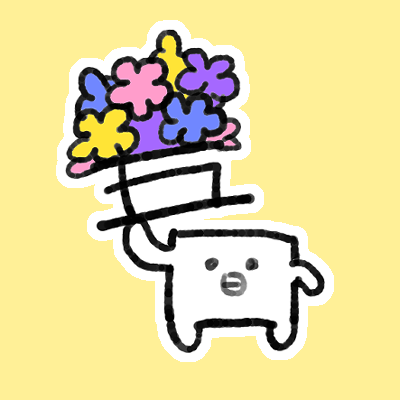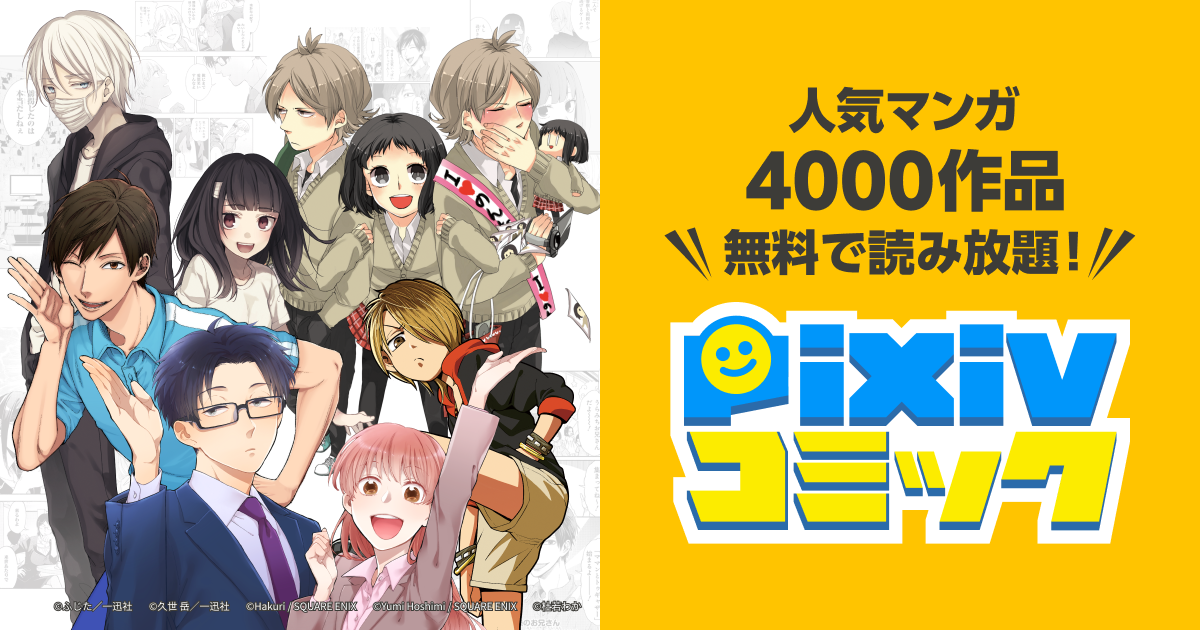趣味と仕事で創作はどう変わる?吾笠花×宮田トヲル×吉井ハルアキたち商業BL作家に訊いてみた
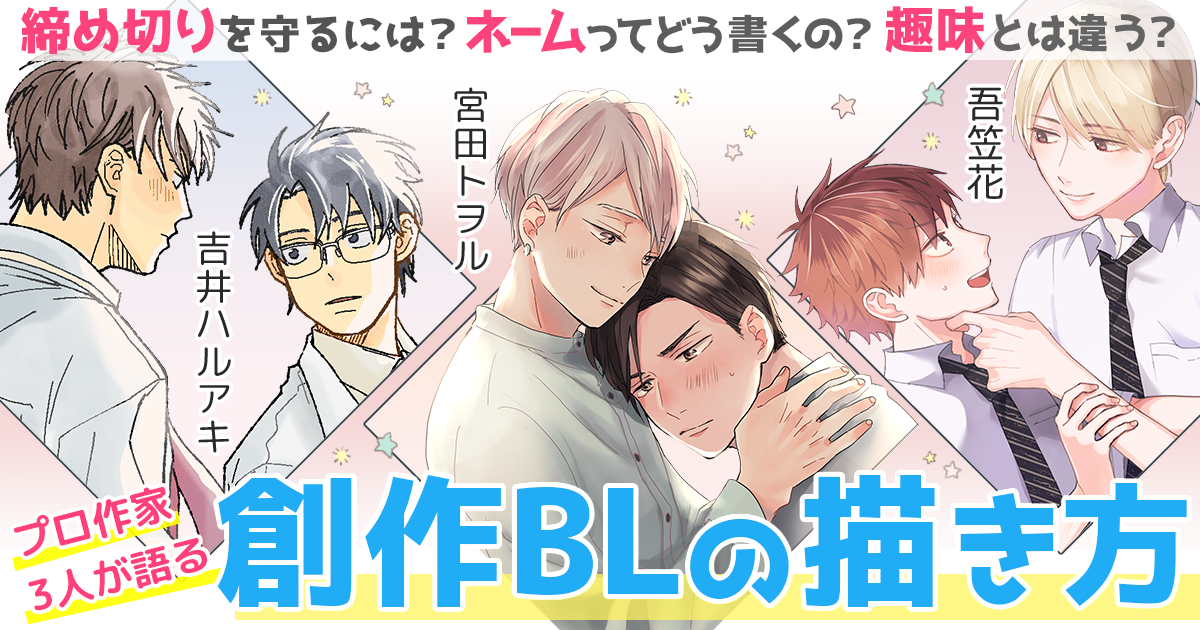
構成/原田イチボ@HEW
同じ創作といえど、趣味と仕事では大違い。とくにBLというジャンルにおいては、ファンアートとオリジナルという違いに苦労する人も多いことでしょう。
プロのBL作家たちは、これまでどんな努力を重ねてきたのでしょうか?
リブレから新刊を発売する新進気鋭の作家3名、『幼なじみの顔が良すぎて逆らえない』( 8月20日発売)の吾笠花先生、『デリバリーハグセラピー』(8月20日発売)の宮田トヲル先生、『君と出会ってから僕は』(7月20日より発売中)の吉井ハルアキ先生にお話を伺いました。
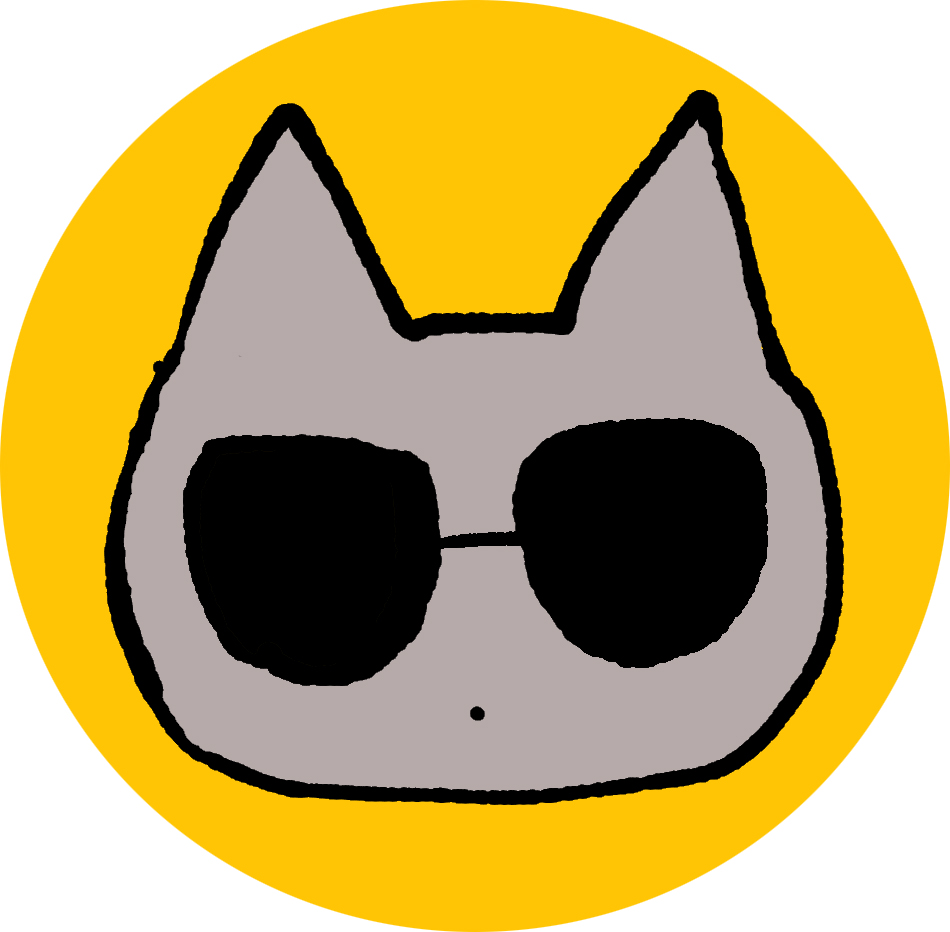
- 宮田トヲル
-
2018年にプロデビュー。2019年にはデビューコミックス「彼のいる生活」を発売し、現在も続々重版中。
前作より少しオトナな恋愛を描いた最新コミックス「デリバリーハグセラピー」は8月20日(木)に刊行予定。
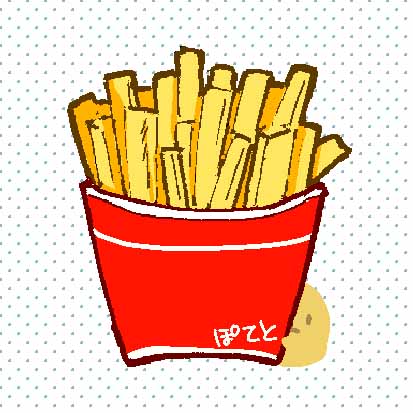
- 吉井ハルアキ
-
「その恋、自販機で買えますか?」(メディアソフト刊)で作家デビュー。リアルな日常を切り取ったような質感のある物語を創り出す。
最新刊「君と出会ってから僕は」(リブレ刊)が好評発売中。
「新刊落としました」が通用しないプロの世界
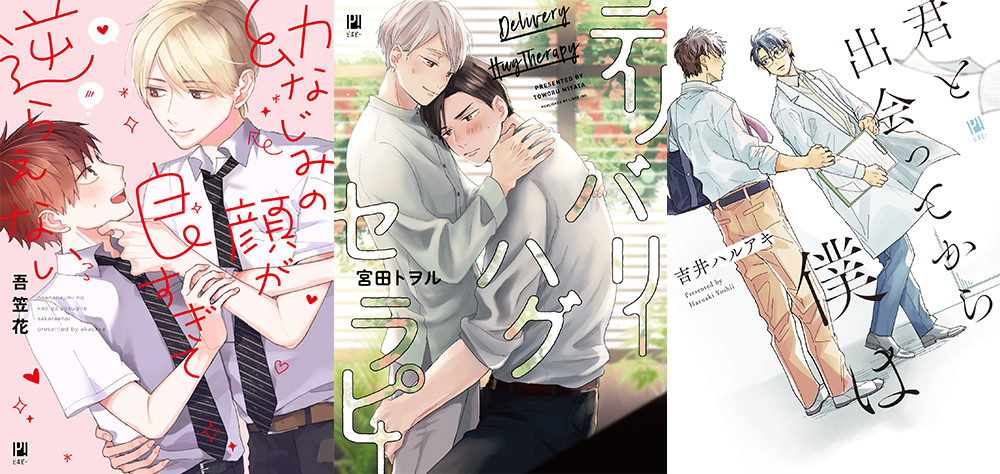
── まず皆さんの新刊について、読者にメッセージをお願いします。吾笠花先生は、『幼なじみの顔が良すぎて逆らえない』とある意味ハードルを上げているタイトルにもかかわらず、期待を上回るイケメンぶりに驚きました……!
吾笠花:恐縮です(笑)。今回はBLとしてはひよっこな、じれったい幼なじみふたりを描いています。自分がかわいいなと思うものを詰め込みました!
── 宮田先生の『デリバリーハグセラピー』は、週に一度だけハグする不思議な関係を描いた物語です。人間関係がそこはかとなくエッチですね……。
宮田:主人公の貴一さんは、人生に疲れちゃっていて、まぁダメな人なわけです(笑)。読者さんの心もふわっと軽くなるものがあればうれしいです。
── 吉井先生の『君と出会ってから僕は』は、いわゆるコミュ障気味な高校教師と教え子の物語ですね。人付き合いが苦手な主人公だからこそ、じっくり変化していく関係が印象的です。
── 皆さんどのようにデビューに至ったのでしょうか?
吾笠花:マイペースに創作してみたくて、オリジナルBLをpixivなどに投稿しはじめたら編集者さんからお声がかかってデビューとなりました。
宮田:私は当時夢中で描いていたファンアートをきっかけに編集者さんから声がかかりました。
吉井:私もTwitterにオリジナルのBL漫画を投稿していたら、お仕事の依頼をいただくようになりました。
── もともとプロデビューは意識していたのでしょうか?
吾笠花:全然想像していませんでした。お声がけいただいて、初めて「デビュー……?」みたいな。
宮田:私も全然思っていませんでした。自分にオリジナルBLが描けるとは思えず、実はリブレさんのオファーも一度お断りしているんです。ありがたいことに担当さんの熱意がすごくて、今に至るわけですが……。
吉井:私も意識していませんでした。今でもプロを意識できているかどうか、わからないです……(笑)。
── 趣味の創作と、仕事の創作で、何か違いはありますか?
吾笠花:やはり、「お待たせしてしまっている」という意識ですね……。
(一同笑い)
吾笠花:趣味の同人誌だと、最悪の場合、「新刊落としました」って言えるじゃないですか。でもお仕事となると、それが通用しない。プロデビューして、〆切に対する意識が全く変わりました。
宮田:私はそもそもオリジナルでの創作に慣れていなかったんですよ。ファンアートだと、物語やキャラクターの設定などについて読者さんと予め共有できているじゃないですか。でもオリジナルだと、ゼロの状態からキャラに愛着を持っていただかないといけない。その点は今も手探りです。
吾笠花:ただ、オリジナルはキャラの変化を描きやすいのが面白いですよね。ファンアートだと、原作からかけ離れた展開は描きづらいですが、オリジナルだと、どんどん変化していくものを自由に描くことができます。
吉井:趣味と仕事の創作の違いで言うと、編集さんの有無もだいぶ大きいなと思います。編集さんがいる時点で、完成までの過程が増えますし、一人で創るのとはまた違いますよね。
編集者のダメ出し、正直落ち込まない?
── 趣味と仕事の創作の違いとして、たしかに編集者の存在というのは大きそうですね。
吾笠花:描いている最中から誰かにアドバイスをもらえる環境は新鮮です。基本的に編集さんのことをめちゃくちゃ信頼しているので、何を言われてもうれしいです!
宮田:自分が描くものに自信がないので、世に放つ前にしっかりチェックしていただけるのはありがたいです。しかも自分にはない視点からアドバイスをもらえたりしますからね。本当に日常的にいろいろ褒めていただいて、いつも甘えさせていただいて感謝です(笑)。
吉井:ひとりで描いていた頃は、ただ自分が描きたいもの、描けそうなものばかりを描いていましたが、編集さんがいることで、自分の可能性が広がる気がします。実は初期の頃は、ネームの赤入れ(修正指示のこと)が結構多くて。なんとなく描いてしまったコマに対して、よく「このコマはどういう意図で描いていますか?」と指摘されていました。でもそのやり取りを通して、ひとつひとつのコマの意味をしっかり考えるようになった気がします。
リブレ編集:なんだか編集への接待みたいになっていませんか(照)? 吉井先生の発言で言うと、たしかに以前はネームに赤を入れることが多くありました。新人さんに多いのが、何を入れていいのかわからないコマに目元や口元、手元のアップをとりあえず描くことです。そこを意識して変えるだけで、作品全体がグッと締まりますよ。吉井先生は吸収力がすごいので、なんと後半はほぼ直し無しのネームもありました。良い意味で編集を踏み台にしてくださったと感じています。
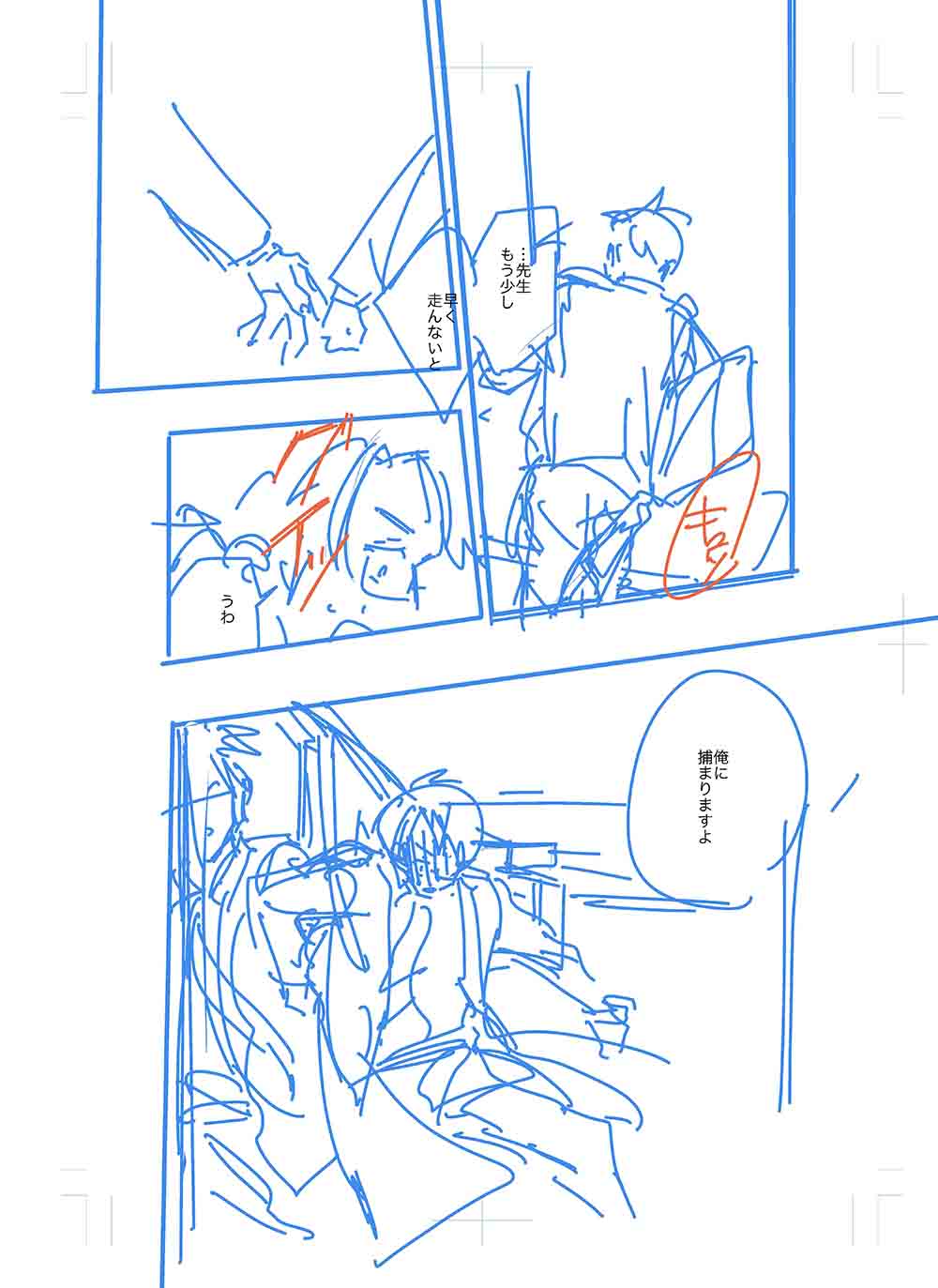
ひとコマひとコマ考えられた吉井先生のネーム
── 編集者からの赤入れに落ち込むことはありませんでしたか? 趣味の創作ではダメ出しを受ける機会がほとんどありませんし、そこで挫けてしまう作家さんもいそうですが……。
吾笠花:私の場合、アドバイスをもらえることの面白さのほうが上回りました。最初出したネームより、赤字を受けてブラッシュアップしたネームのほうが格段に進化しているんです。「編集さんのアドバイスに従えば良いものができるんだ」と学びました。
宮田:正直なところ、赤が入るのって自分でも描きながらモヤッとしていた部分ではあるんですよ。そういう部分にしっかり赤が入ってアドバイスをいただけると、むしろ「スッキリした!」という感覚ですね。だから挫けるよりもワクワクします。
吉井:私もアドバイスをいただける環境に対して、うれしさやありがたさのほうが強いです。
リブレ編集:皆さん、「自分が最初に出したネームが絶対」ではなく、ストーリーに対して最適な表現を目指してくださっているからこそ、どんどん新しい技術を吸収できるのだと思います。編集者としても、そのような真摯な姿勢を尊敬しながらお仕事をご一緒しています。
読者のニーズと“性癖”の間で……
── 読者のニーズと、いわゆる“性癖”の間で、「自分は萌えるけど世間的にはどうだろう」と悩むことはありませんか?
宮田:もともと私の好みがそこまでニッチではないので、あまり世間とのギャップを感じたことはありません。あと、自分が好きなものは人類みんな絶対好きだと思ってしまっているタイプなので(笑)。でも幼馴染ってみんな大体好きですよね?
吉井:私も読者さんのニーズに揺れることはほとんどありませんね。
── 作品を拝読して、吉井先生は黒髪短髪の眼鏡が好きなのかなぁと感じていました。
吉井:それは……たしかにそうですね……(笑)。自分の好きなものを結構そのまま作品に盛り込んでいます。
── (笑)。吾笠花先生はいかがですか?
吾笠花:それで言うと、私はショタですね……。ショタをこっそり作品に混ぜ込むというか……。
── 言われてみれば、たしかに作品に巧妙にショタが織り交ぜられている!
リブレ編集:吾笠花先生はコミックスのために幼馴染2人の過去編を描き下ろしてくださったんですが、ご提案いただいたときに「大丈夫ですか?」とものすごく心配されていました(笑)。もちろん大丈夫です!
吾笠花:ショタを描きたい願望がすごくあったんですよ(笑)。
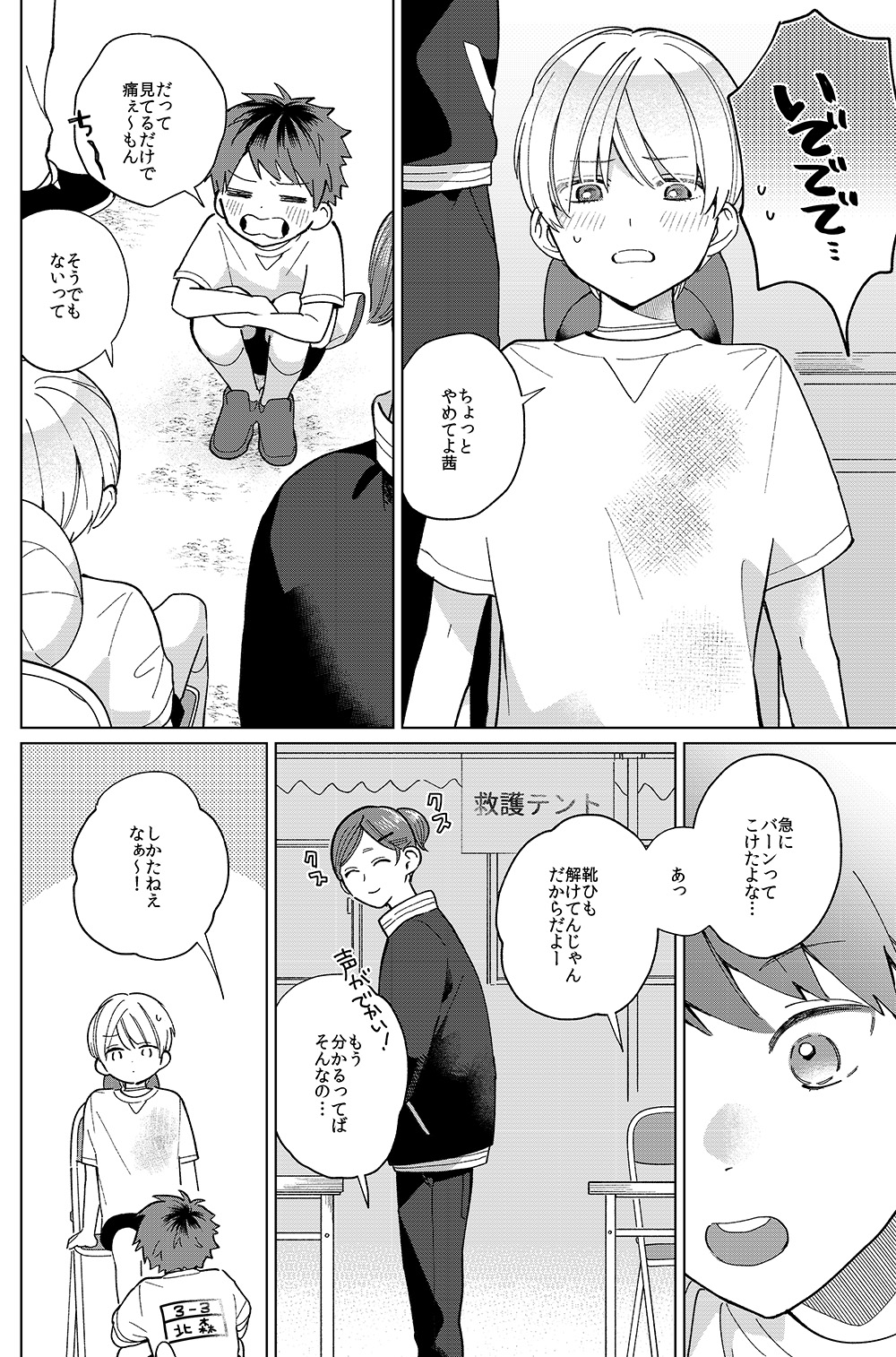
コミックス描き下ろし「初恋」より。吾笠花先生の願望がつまってます!
── キャラクターを考えるとき、攻めと受けのどっちを先に作るのでしょうか?
吉井:私は攻め受け関係なく、物語の主人公であるほうから考えます。
宮田:あくまでカップリングでセットなので、攻めと受けどちらが先というのはないんですが、物語における比重によって、キャラ設定をさらに固めていく時間が長引く場合はあります。
吾笠花:私もどちらが先というのはありませんが、「受けのこと幸せにしてやれよ!」という一心で個人的に攻めに対して求めるもののほうが大きいので(笑)、攻めについて考える時間のほうが長いかもしれません。
── 吾笠花先生は、今回の『幼なじみの顔が良すぎて逆らえない』もですが、一言でどんなカップリングかわかる作品タイトルをつけますよね。SNSでの拡散を狙ってのことかと勝手に想像していましたが……。
吾笠花:マーケティング的なことというより、ひとつドカンってわかりやすい要素があったほうが、自分としてもお話を作りやすいんですよ。そのキャラについて妄想しまくってお話を組み立てていくので、何かフックみたいなものがないと、妄想するにしてもブレていっちゃう。
リブレ編集:吾笠花先生は、作家としてのTwitterアカウントと別に、「春見と茜は普段こういうことをしているんだろうな」みたいな妄想を投下するアカウントを持っているんですよね。ネタ出しのメモにもなりますし、ファンの方々もその投稿を読んで喜んでくださっています。
── 皆さんの新刊のキャラクターたちは、どのように生まれたのでしょうか?
吾笠花:「まだ付き合ってないのかよ!」とツッコみたくなるようなふたり、というのがコンセプトでした。片方が片方にベタ惚れしているシチュエーションが好きなので、そこを深堀りしていくうちに“顔が良すぎる”という要素が生まれました。
宮田:私の好みで生まれましたとしか言えません(笑)。貴一さんのビジュアルは、私が釣り眉のたれ目が大好きなのを完全に反映しているんですよ! 逆に尚くんは今まで描いてこなかった性格のキャラクターなので、頭を悩ませる部分も多かったんですが、挑戦してみてよかったです。
吉井:編集さんから「生徒と教師はどうですか?」とご提案いただいたのが始まりです。「こういう教師がいたらいいな」という妄想からスタートして、そこからリンクさせる形で相手の子が生まれました。
「これは本当に面白いのか?」疑心暗鬼になったとき
── どのようにネームを作っていますか?
吾笠花:私の場合は大まかに物語の流れとセリフを妄想して、それをテキストに書き出してプロットを組んだあと、ページ数に合うように割り振ってネームを作っていきます。ネームが苦手なので、お二方のやり方も知りたいです……!
宮田:私もめちゃくちゃネームが苦手なので知りたいです(笑)。やり方的には吾笠花先生とほぼ同じですね。あとは1話の中にときめくシーンを1箇所は入れるようにしています。全体のストーリーの中で、どうしてもつなぎっぽいエピソードは出てきてしまうものですが、読者さんを退屈させないようにキャラの表情とか関係性で上手く見どころを作れるように意識しています。

宮田先生のネーム。1話に必ずきゅんとくるシーンを入れるそう。
吉井:まず物語全体のプロットを組んでから、各話に割り振ってネームを作っていく感じです。私の場合、連載更新の間が空くことがあったので、読者さんが前回の内容を思い出せるように、振り返りできる要素を各話の序盤に盛り込むようにしていました。
── 作業していて「これは本当に面白いのか?」と自問自答することはありますか? 周囲の同人作家たちがよく苦しんでいるので……。
吾笠花:「これって面白いのかな?」ということばかり考えていますよ!
宮田:毎日が疑心暗鬼です。描いている最中は「これ最高!」と思っているんですが、翌日になると「本当か?」と(笑)。自意識と格闘しながら描いています。
吉井:あまりに考え込みすぎると、もはやネームを編集さんに見せたくなくなるので……「とにかく出来たら出す!」と決めるようにしています。
── おふたりは疑心暗鬼に陥ったときの対処法はありますか?
吾笠花:編集さんに相談すると、自分以外の視点からアドバイスをもらって、抜け道につながります。
宮田:突然ひらめきが降ってくることもあるので、極力まずは自分でなんとかしようとしますが、どうしてもダメなら私も編集さんに相談ですね。自分だけで抱え込もうとするのは危険です。
商業作家志望は「連絡が大事」を忘れるべからず
── プロとして創作するようになってわかったことはありますか?
吾笠花:〆切があるなぁとひしひし感じています。
(一同笑い)
宮田:私も趣味で描いているときと違って、〆切に合わせることを強く意識しています。ファンアートを描いていた時とはまた違った層の読者さんも増えましたし、読者さんに楽しんでいただけることを優先して創作するようになりました。
吉井:「読者さんがいる」ということを第一に考えるようになりますよね。
── 〆切を守るための心がけはありますか?
吾笠花:これもおふたりにぜひ聞きたいです! 私はとにかく忘れないように、カレンダーや付箋を使って、スケジュールが視界に入る環境を作っています。あとは作業をリスト化して、終わった部分はチェックを付けて、自分を励ましながら進めています。
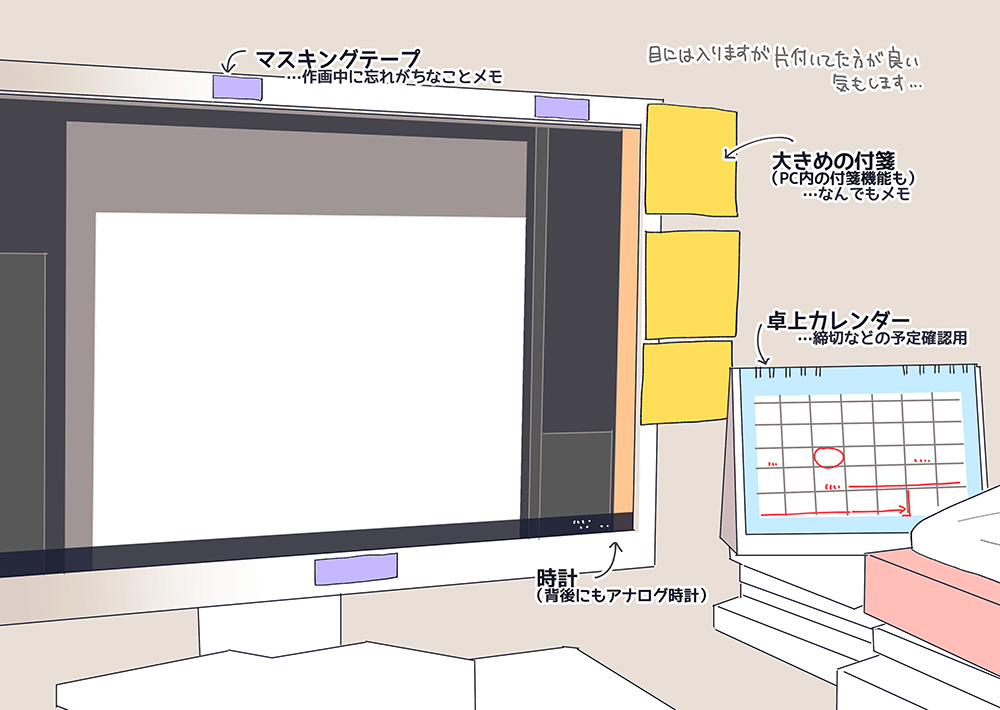
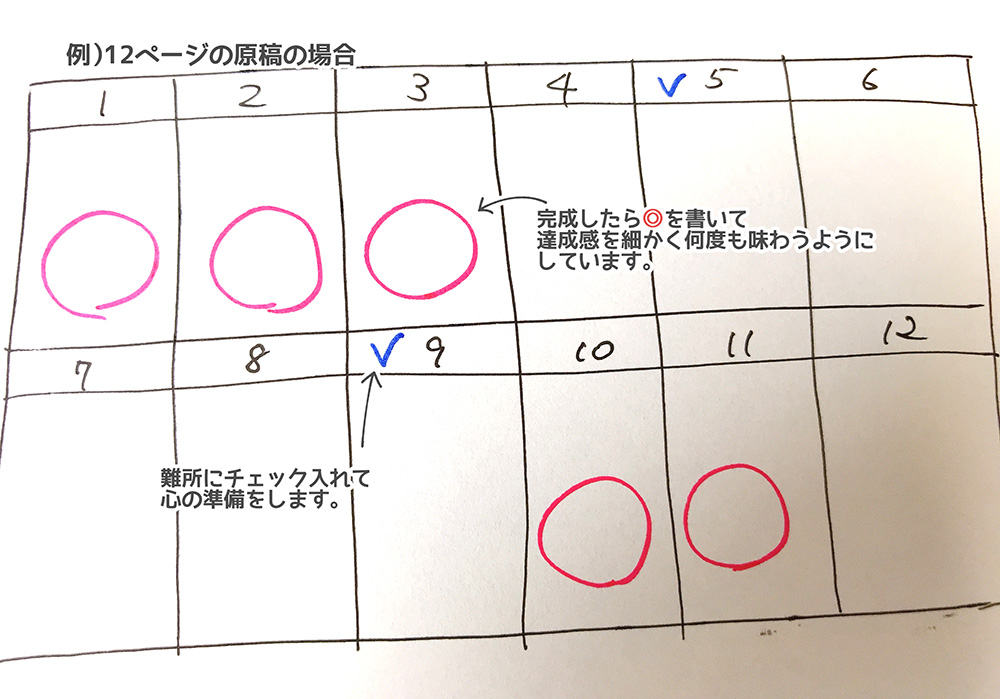
吾笠花先生のPC周りと作業リスト。この企画のためだけに描いてくださいました!
宮田:編集さんは余裕を持ったスケジュールを伝えてくださるんですが、余裕があるとなるとつい怠けてしまうので、予備日を持たせるつもりで自分でキツめのスケジュールを組み直しています。
吉井:私は編集さんをお待たせしてしまうことがあるので、何も偉そうなことは言えませんが……守るというより、守れないときのことを…(笑)。遅れそうなときは、とにかく連絡を入れるようにしています。
リブレ編集:でも連絡いただけるのって本当にありがたいんですよ! たまに作業に集中するあまり連絡が取れなくなってしまう作家さんもいますが、作家と編集はチームなので、悪い状況だとしても共有していただけると大変助かります。商業作家志望の方は、「連絡は大事」ということを意識するといいかもしれません。
── では最後に、もしも「これから商業BL作家として活躍していきたい」という人にアドバイスを送るとすれば?
吾笠花:自分の好きなものをいっぱい覚えておくと、漫画のアイデアだけではなく、すごくいろんなことに使えます。編集さんというパートナーはいますが、やはり創作は基本的には孤独な作業です。ときには心が折れそうなときもありますが、好きなものがあれば自分を保てる。「揚げ物が好き」でもなんでもいいんですよ(笑)! どんなものでもいいので、自分の好きなものを把握しておくと助けられる場面があるはずです。
宮田:キャラクターの行動でも思想でも作品の世界観でも、結局自分の中にあるものしか描けません。自分の中にあるものを増やすために、BL漫画以外でも幅広い作品に触れて、いろいろな人と会話する機会を作るのがいいと思います。自分だけの世界に閉じこもると、いつか絶対苦しくなっちゃいますから。
吉井:アドバイスというより、私が普段よくしていることなんですが、煮詰まってる時は自宅以外で作業をしています。その時、聞こえてくる会話の流れや仕草だったりを覚えておくと、自分以外の感情が描きやすいと思うので。
── 皆さん、今日はありがとうございました!

